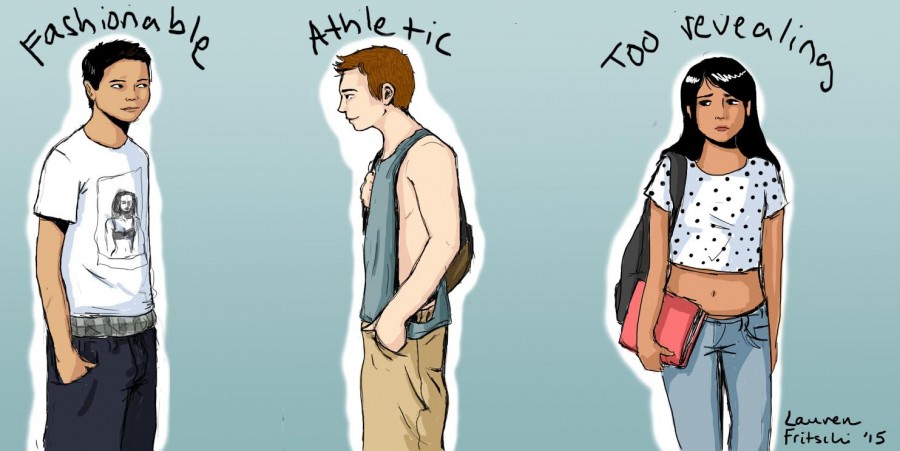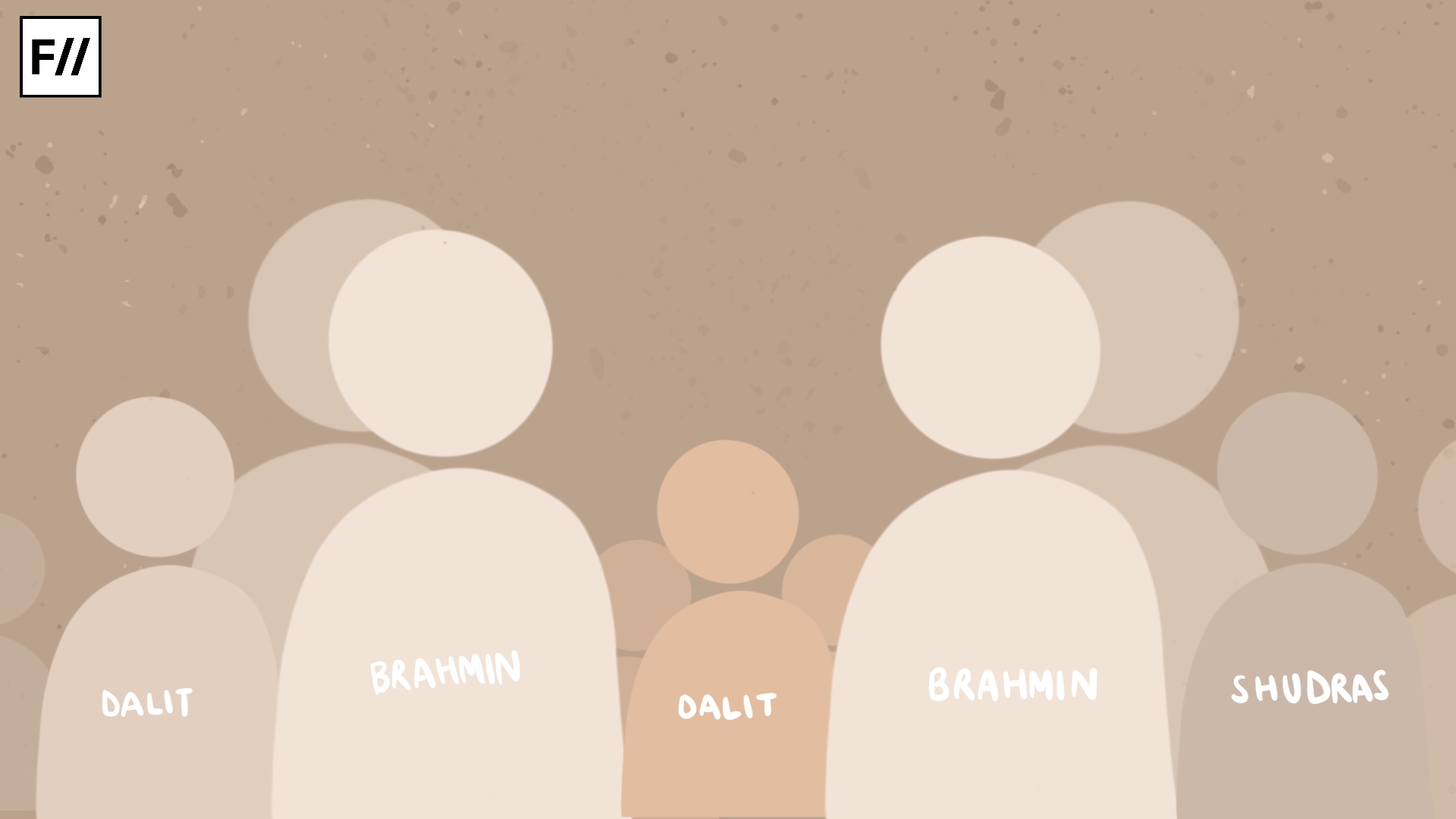“It is the responsibility of every citizen to question the authority.” – Benjamin Franklin
In the early 19th Century, Nangeli, a Ezhava woman from Kerala, cut her breasts off as a social protest against the ruling authority when the lower caste women were ordered to pay ‘breast tax’. Her decision was an act of resistance in claiming the right to one’s own body. The supremacy of the Brahmanical patriarchy was symbolically questioned by Nangeli which resulted in revocation of the brutal law.
Two weeks back, Hyderabad witnessed a protest in one of its top most degree colleges, St. Francis Degree College for Women. The college girls, holding placards in their hands, were protesting outside the main gate to claim their sartorial rights. The placards read- ‘Francis – A college or a matrimonial site?’, ‘We are skipping our lessons to teach you one’, ‘D grade mindset- B grade NAAC’, ‘Stop moral policing’, ‘Women are not objects – men are not animals’.
Indisputably, imposition of strict rules on students in educational institutions in the name of ‘dress code’ and ‘decency’ is not new. Restrictions on hair styles, guidelines on length of kurtis and sleeves have always been there. ‘Special monitors’ (teaching faculty/security guards/attenders), appointed by the management, stand at the entrance gate to check the dress code of the students early in the morning. In a few educational institutions, students were sent back home for wearing sleeveless, having spiky hair cut or a man bun. At times, they are blatantly not allowed to attend the first-hour classes as a punishment. They have been subject to all kinds of humiliation. ‘Are you even a girl?‘, ‘You look vulgar‘, ‘This is not Indian culture‘ are a few derogatory remarks they would come across almost every day.
At times, they are blatantly not allowed to attend the first-hour classes as a punishment. They have been subject to all kinds of humiliation. ‘Are you even a girl?‘, ‘You look vulgar‘, ‘This is not Indian culture‘ are a few derogatory remarks they would come across almost every day.
Educational institutions are supposed to comply with the concept of women empowerment and women-centric development. It’s quite deceptive to learn about them having appointed female guards to ‘check’ students dresses.
The protest by the students was built-up rage from a whole series of preceding issues. It all started in the beginning of August, when they were made to sign an agreement to wear only fully-covered clothes to college, following which the strict enforcement began. Girls were not allowed inside the gate for wearing even a centimetre above knee length. Muslim women who wore burqa were forced to remove the burqa near the gate and show the length of the kurti which was quite an embarrassment. Eventually, the students failed to reach to their classes on time. The female guards behaved in an ill-mannered and brutal way. They raised questions on the upbringing of the girls. It got worse when a few auto-rickshaw drivers along with the watchmen of the institution mocked them.
Early protests were put down by the management by talking to a bunch of students and advising them that a long-length kurta would bring them good marital alliances and advised them to behave and dress accordingly, as it was being done for their good. The management also pointed out the male faculty gets uncomfortable with the shape of their body, and the length of their clothes. As the situation became worse, one of the students took it up on a social media platform. She penned down the disappointing situations along with a video of the guards humiliating the students which soon garnered a great deal of attention and support from fellow students. Students facing similar problems started sharing the post on social media platforms. Many celebrities and activists too pitched in their dismay to the whole situation. It was followed by a collective decision by the students to protest in front of the college gate.
After a four-hour long protest in front of the gate, the management agreed to speak upon the matter, which led to the revocation of unnecessary policing and sticking to the original undertaking which orders students not to wear ‘sleeveless’ and institutional understanding of ‘immodest clothes’. There were multiple unparallel opinions from various spheres of the society. Few men who witnessed the protest on social media platform thought it was unnecessary, while the others looked at it as a much-needed stand. Disha, a student from one of the colleges from the twin cities, said, “Students have often been demeaned by the authorities since they firmly believe that they are supposed to listen to the ‘authoritative’ figures without any resistance. It is not always about the elderly being right always. At least it does not serve true in different environments and generations that we have grown up in.”
In contrast to this, another student, Farida said, “It’s not a problem of the mindset of a generation. The faculty of our college invalidated our cause whereas our parents were in complete support of us, despite being from the same age group.” Lalita, a former student from St. Joseph’s Degree and PG College, was told by the faculty that since her kurta was short, if she would bend down in the classroom, the boys would look at her and get distracted which would cause disturbance in their studies. Keerthana, from the same college, was once questioned, “What are you trying to expose by not wearing a dupatta?“
Also read: Why Do School Dress Codes End Up Sexualising Young Girls?
First things first, the sartorial prohibitions being implemented on students convey the ideology of the educational institutions. If the length of the clothing is a deciding factor for the presence of the student in the college, then there is a serious problem with the administration’s understanding on women’s body and the apparel. Women always undergo strict rules of conduct by various authoritative figures ranging from family to state, unlike their male counterparts who have a very ‘loose’ guidelines.
They are always told to behave according to the notions of gendered-society. Any deviation from the practice results in moral punishment which in turn results in severe consequences. Women were systematically trained from early childhood to ‘listen to’ family, school and the state and to abide by this dominant gender supremacist thought. Breaking this draconian rule is important, and the rigid mentality of the administration with stereotyped thoughts acts as a hurdle in creating a gender-sensitised society.
Early protests were put down by the management by talking to a bunch of students and advising them that a long-length Kurta would bring them good marital alliances and advised them to behave and dress accordingly.
One of the placards held by the students struck a hard note on the management’s belief of wearing long-length kurti to be a direct escort for good marriage proposals. The intensity and the importance of this resistance cannot be ignored since learning centres are trying to become ‘marriage bureaus’. The management’s particular way of considering apparel as the key to a healthy marriage itself signifies the pseudo empowerment that they are pouring upon the women. Responding to the protest, Ms Prachi, teaching faculty, Bhavan’s Vivekananda College says, “Today, when a woman is making her choice regarding her career, why can’t she make a choice regarding what she wants to wear; as long as she keeps in mind that she is dressed in a ‘decent and dignified manner.” Ms. Swathina, Lecturer in English, says, “It’s not the length of the kurta that needs to be long to hide our body, but the openness of our thoughts that should ‘slap’ the narrow-minded society’.
Educational institutions can openly talk about the male faculty being uncomfortable with the dressing sense of students but is very subtle to bring out the complications of a toxic gaze. The academic governance of the institution on the apparel systems is sexist in nature since the reason they put forward is justifying the toxic male gaze. Justifying the objectification of women’s bodies by the management, and connecting attire to the contract of marriage, reveals the conventional mindset of the authorities.
On the bright side, the social media spaces have been acting as a democratic platform to sensitize the young generation on the issues related to gender-based violence, sexualisation and objectification of women. Women today are utilising social media platforms to voice their thoughts as tools of resistance. When one of the students shared the St. Francis’s video of ‘moral policing’ on social media, it grabbed the attention of the general public. It was also hailed by many activists and celebrities which further boosted the confidence of the women. The call for protest was an audacious decision made by the students.
This dissent acts like a warning to all the educational institutions that women will no longer abide by the patriarchal rules set by the management and are ready to fight for their rights.
Also read: St Francis College, Hyderabad Takes Body Policing To A New Level
Mr. Shiva Thrishul has been teaching Mass Communication for the past three years in Hyderabad. An alumnus of University of Hyderabad, 2015 and is currently pursuing Ph.D from Osmania University. His research areas of interest are Gender, Caste, Culture, Tattoos and Film studies.
Ms. Shanaz Fatima is an Under Graduate student from Bhavan’s Vivekananda College. Mass Communication, Political Science and Economics are her core subjects. She is an enthusiast in women’s issues.
Featured Image Credit: Lauren Fritschi via The Pearl Post




